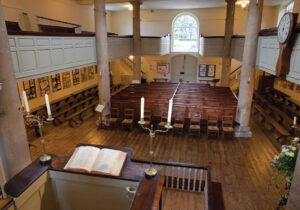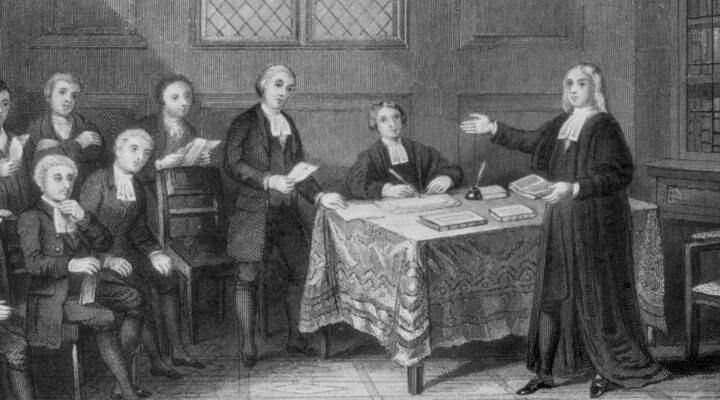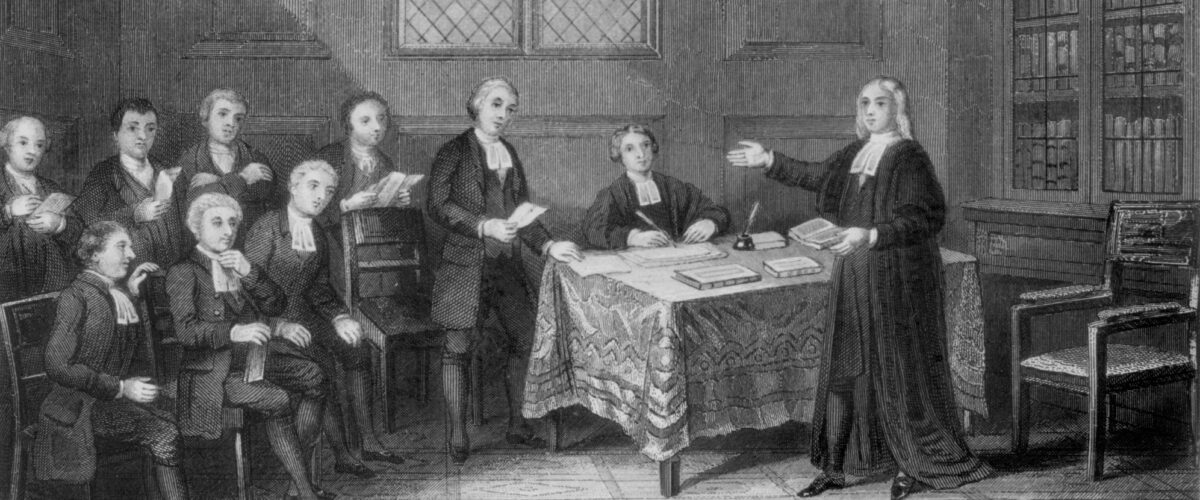Why is it so hard for dissident church units to leave the 12-million-member worldwide United Methodist Church? The ties that bind United Methodists together are contained in one arcane word: “connectionalism.”
The concept of connectionalism was confirmed May 9 when the church’s “high court,” the Judicial Council, ruled that annual (regional) conferences can’t withdraw from the UMC. Judicial Council Decision 1444 stated in part: “There is no basis in church law for any annual conference to adopt stopgap policies, pass resolutions, take a vote or act unilaterally for the purpose of removing itself from The United Methodist Church.”
The ruling dealt a serious blow to proponents of the newly formed Global Methodist Church, whose leaders have been agitating for months for annual conferences to vote to leave the UMC. The campaign has been an attempt to beef up the membership and financial resources of the breakaway denomination in response to continued delays of General Conference, the UMC’s top legislative body, because of the coronavirus pandemic. Originally scheduled for 2020 and delayed three times since, General Conference was to have voted upon “A Protocol for Reconciliation and Grace Through Separation” that would have provided $25 million for a new traditionalist denomination. However, that pact, independently negotiated in late 2019, now seems dead in the water since General Conference won’t meet until 2024.
The Judicial Council decision reaffirmed the UMC’s legal identity that goes all the way back to its founder, John Wesley. In a 1999 article in Methodist History magazine, “Mr. Wesley’s Trust Clause: Methodism in the Vernacular,” scholar John L. Topolewski quoted Wesley:

A view from the pulpit in John Wesley’ “New Room” at Bristol, England.
I built the first Methodist preaching-house so called at Bristol, in the year 1739. And knowing no better, I suffered the Deed of Trust to be drawn up in the Presbyterian form. But Mr. Whitefield hearing of it, wrote me a warm letter, asking, “Do you consider what you do? If the trustees are to name the preachers, they may exclude even you from preaching in the house you have built. Pray let this deed be immediately cancelled.” To this the trustees readily agreed. Afterwards I built the preaching-houses in Kingswood, and at Newcastle on Tyne. But none beside myself had any right to appoint the preachers in them.
Topolewski further explains: “As George Whitefield made clear, the primary fault of the Deed of Trust ‘in the Presbyterian form,’ was that it placed within the authority of local trustees the right to name their own preachers. Indeed, in the Birstall House case, which occasioned Wesley’s reflections on such matters, the original deed of 1751 gave ‘12 or 13 persons power not only of placing, but even of displacing the preachers at their pleasure.’”
Unfortunately for Wesley, he wasn’t able to rescind the original “Presbyterian model” deed given to Birstall House. Subsequently, however, Methodist “societies,” as preaching places originally were called, have been governed by what is known today as the “trust clause.”
In brief, The United Methodist Church today is structured so that the titles to all real and personal property, tangible and intangible, are held at “General, Jurisdictional, Annual, or District Conference levels, or by a local church or charge, or by an agency or institution of the church.” Only the trustee body can dispose of church property, such as when an annual conference deconsecrates and sells a local church building. Details of how the trust clause operates can be changed only by the General Conference, as the Judicial Council ruled.
To do away with the trust clause entirely would require a constitutional amendment enacted through a process requiring a series of supermajority approving votes; first by two-thirds of General Conference delegates, then by two-thirds of the UMC regional units around the world. Furthermore, annual conference approvals require a supermajority of two-thirds to be legitimate; no simple 51 percent majority will suffice.
To do away with the trust clause entirely would require a constitutional amendment enacted through a process requiring a series of supermajority approving votes.
The push for a decision on annual conference withdrawal was spurred by this year’s “annual conference season.” From May through July, the UMC’s regional units in the United States hold their annual sessions at which new clergy are ordained, older clergy retire, mission and ministry reports are given and the lay and clergy members of the annual conference vote on church business. (Regional units outside the United States hold their annual sessions at other times, especially countries in the Southern Hemisphere where seasons run opposite to the Northern Hemisphere).
Leaders of the Global Methodist Church and its founding organization, the Wesleyan Covenant Association, intended to push U.S. annual conferences to vote immediately on leaving the UMC and joining the GMC.
Unlike annual conferences, local congregations have the right to leave the UMC “for reasons of conscience,” according to the process laid out in Paragraph 2553 of the United Methodist Book of Discipline, the collection of church laws and policies. At present, those “reasons of conscience” typically center on the issue of LGBTQ acceptance. Some congregations have left because they believe United Methodist bishops haven’t sufficiently enforced the church’s bans against same-sex marriage and ordaining LGBTQ clergy. Others have left because after 50 years of infighting, the UMC hasn’t done away with its policy that “doesn’t condone homosexual practice and considers this practice incompatible with Christian teaching.”
Whatever the reason for a church wanting to disaffiliate, the trust clause still rules. The process for a local congregation to leave requires notifying its district superintendent of the intention to disaffiliate, followed by a period of spiritual discernment of at least 30 days leading to a vote of the “charge” or church leadership. Once a local church votes to leave the UMC, its request goes to the annual conference. No church can leave and retain its property without an approving vote by the regional unit, which meets only once a year unless it chooses to hold a special session such as the one that the Indiana Annual Conference has scheduled in November.
After the request to disaffiliate is submitted, a complicated financial formula is computed to recompense the annual conference for the money and personnel it invested to start the congregation. Currently, churches wanting to disaffiliate with their property must pay the annual conference 100% of its annual “fair share” contributions for denominational ministries; 100% of its denominational “fair share” for the year after its departure; and 100% of its portion of “unfunded liabilities” for the pensions of clergy in the annual conference. As one might imagine, these combined payments can amount to thousands of dollars, a total often out of reach for small congregations and none-too-easy for large churches.
Because of the trust clause and related decisions, it could be as much as two years before a dissident congregation would be free to join the Global Methodist Church. Not all congregations that have disaffiliated to date have joined the GMC; some ultraconservative churches have remained independent, as have some progressive congregations. One of the largest departing churches, Frazer Memorial in Montgomery, Ala., opted to join the Free Methodist Church.
John Wesley sought many ways to connect the Methodists of his day, and the trust clause has remained the most enduring legal link. Sadly, in these days of ongoing turmoil over LGBTQ acceptance and UMC administration, the old hymn “Blest Be the Tie That Binds” isn’t a popular sentiment.
Cynthia B. Astle is a veteran journalist who has covered the worldwide United Methodist Church at all levels for more than 30 years. She serves as editor of United Methodist Insight, an online journal she founded in 2011.
Related articles:
United Methodist Church split draws celebration, lament and soul-searching
Just when you think the United Methodist Church breakup can’t get any more difficult …
Here’s what you need to know about why United Methodists now appear headed for a nasty divorce


